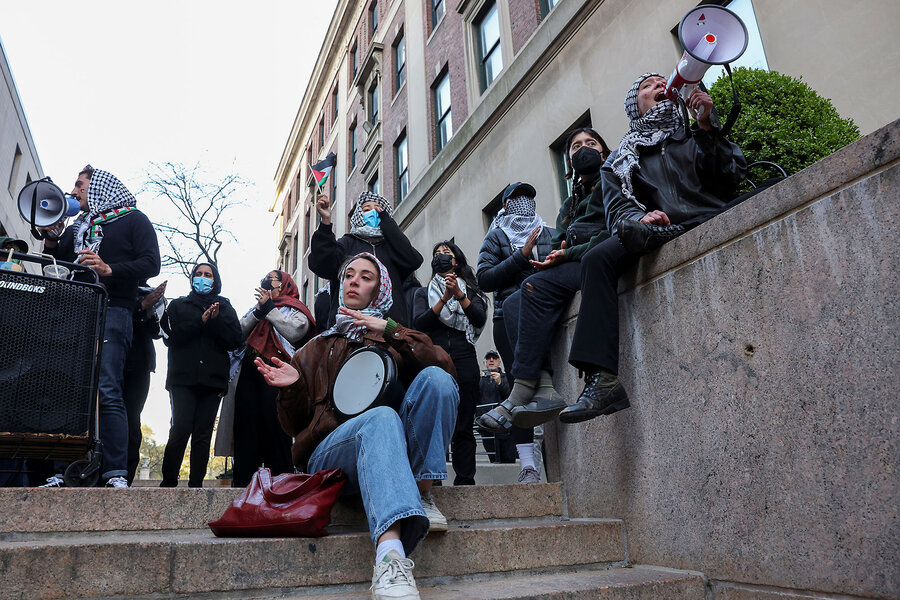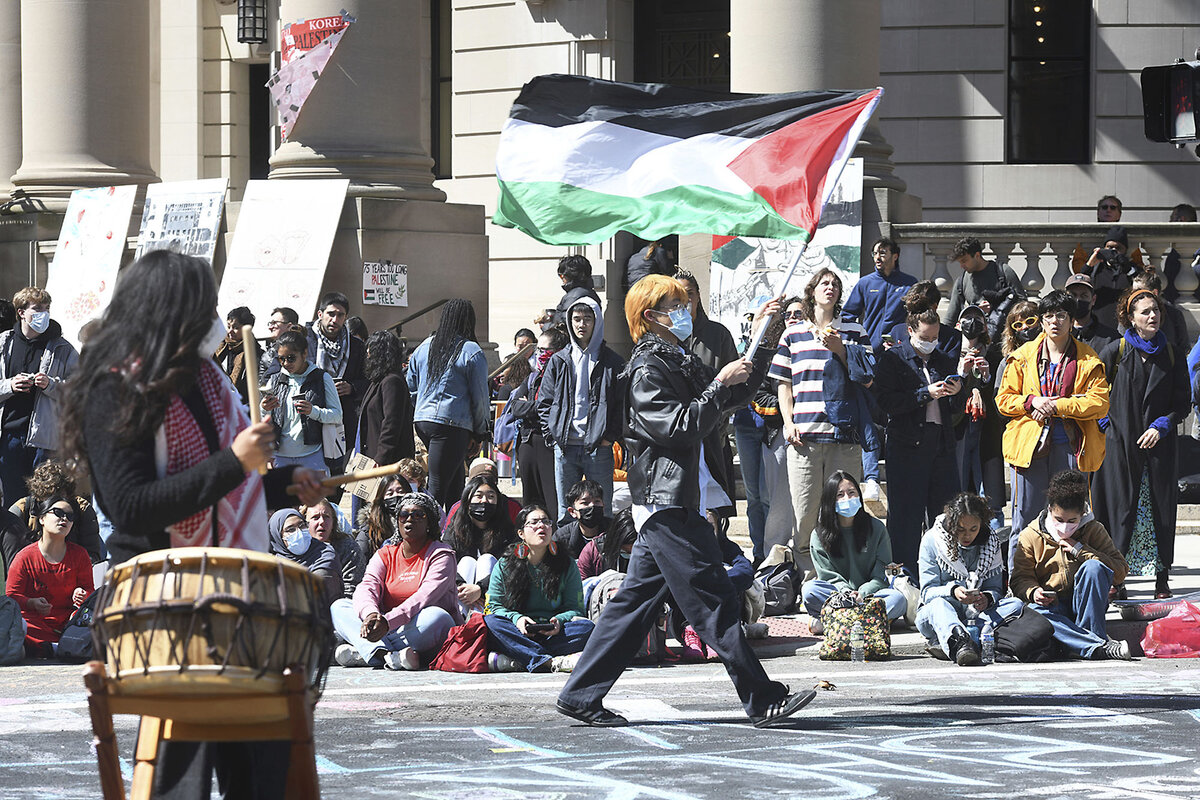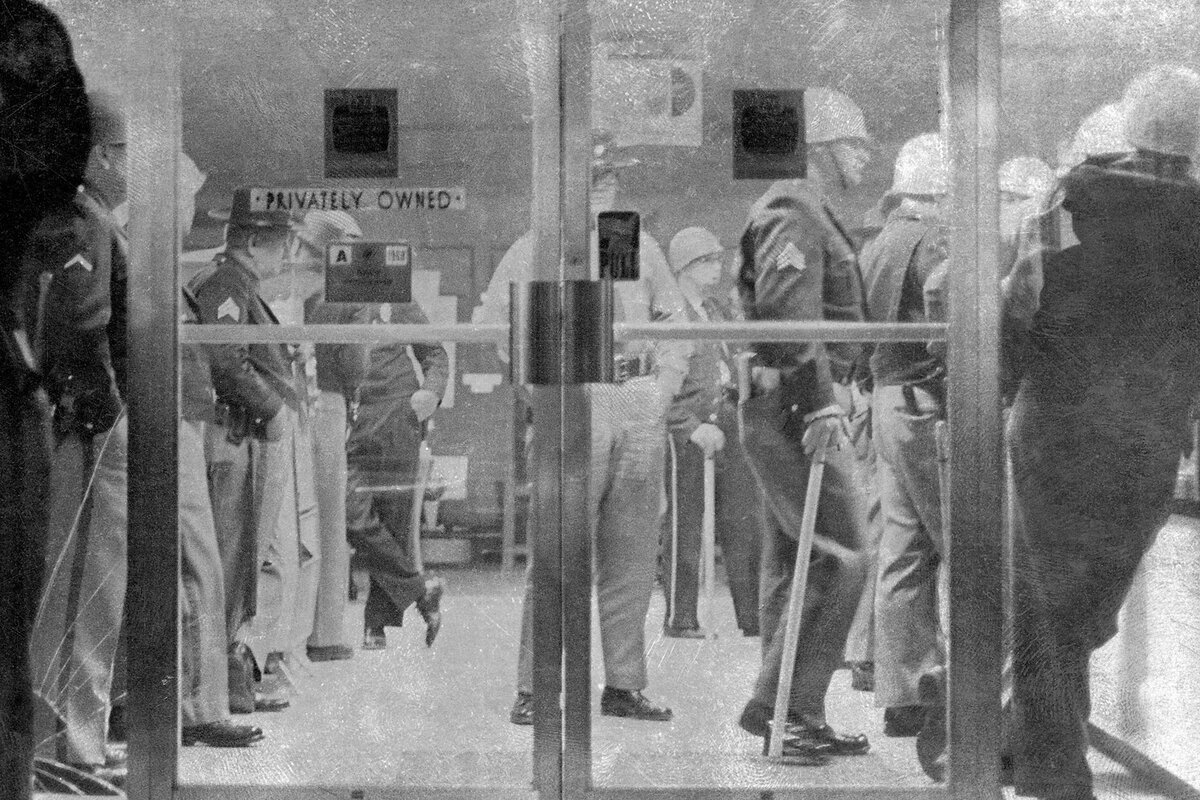Commentary on Columbia: History, student protests, and humanity
Loading...
There was a political theorist who famously said there are decades when nothing happens, and weeks when decades happen. As someone who writes about history a good bit, I think we should take those decades when “nothing happens” to remember flashpoints.
When I saw students at Columbia University engaging in a pro-Palestinian protest last week, I thought about South Carolina State University, about Kent State, about Jackson State, and about Southern University. When more than 100 students were arrested in New York City after said protest, my concerns went to the natural escalation that occurs when the people clash with the police, when people push back against war.
I understand that pushback, because I never met my uncle, my dad’s older brother. A few days after his 20th birthday, he was killed in Vietnam. The presidential election year of 1968 was a harrowing one that hit close to home for my dad, who would later decide to attend South Carolina State. Only three months before my uncle died, a student protest ended in tragedy during the events that are now known as the Orangeburg Massacre. Students from SC State and Claflin University sought to desegregate a local bowling alley, which led to an eventual clash with police. It was the first instance of police killing protesters at an American university.
Why We Wrote This
After arrests at Columbia University and other schools, our commentator considers the legacy of civil disobedience. How and why does society’s lens on protests change over time?
I asked my dad, who was a teenager in the midst of the profound protests of the 1960s and 1970s, if he ever thought he might see these types of campus movements again. He said no. Yet here we are.
Early Monday, in response to such resistance, dozens of students were arrested at Yale University. Columbia, meanwhile, moved its classes online amid the fervor. On Monday evening, protesters at New York University were arrested and their encampment cleared out. Cal Poly Humboldt in Arcata, California, is closed and having classes online due to protests.
How will history remember the protests at Columbia and other schools? How do we feel about civil disobedience in the moment – and years later? Can protest movements be truly understood in their own time, or does it take the passage of years for the effects of civil disobedience on a society to become clear?
Even calls for safety at this moment invite polarity – the clashes between pro-Palestinian protesters and the police, the statements from the Biden administration about “physical intimidation” and antisemitism toward Jewish students. This is the nature of civil disobedience – the urgent need for humanity, with tinges of controversy.
If history is any guide, ambivalence toward civil disobedience will evolve into appreciation over time. Martin Luther King Jr., one of the great champions of civil disobedience, was not appreciated in his time for his anti-war rhetoric about Vietnam. In fact, the NAACP voted to determine that it was a “serious tactical mistake.” Nor was his stance of nonviolence always appreciated – whether by segregationists or by activists who sought more direct action.
What softened society’s stance? Was it loss of life? King paid for his beliefs with his life, as did the young adults during the 1960s and 1970s who lost their lives on college campuses. If that is the case, then it is a cost too great to pay.
This is why the current escalation on college campuses pulls at my heartstrings. The anti-war message is cogent, as are the calls for colleges to divest from the war on Gaza.
The anti-war protests come after 26 million people took to the streets after the murder of George Floyd by Minneapolis police in 2020 – the largest protest movement in U.S. history. And after young people across the country campaigned for gun safety laws after the Parkland massacre in 2018. And after millions of women turned out for reproductive rights after the election of President Donald Trump in 2016, who went on to keep his campaign promise to appoint Supreme Court justices who would overturn Roe v. Wade.
Sometimes, it seems the only acts that seem to cut through the nation’s conscience are violent ones.
When police opened fire at SC State in Orangeburg, in February 1968, they killed three teenage students – Samuel Hammond Jr., Henry Smith, and Delano Middleton (a high schooler). At Kent State, Allison Krause, age 19; Jeffrey Glenn Miller, 20; Sandra Lee Scheuer, 20; and William Knox Schroeder, 19, were gunned down by National Guard members.
Eleven days after the Kent State shootings, a Jackson State student and a high school student were shot and killed by police at Lynch Street, a familiar site for protests – Phillip Gibbs, 21, and James Green, 17. The close proximity of the events led to presidential action by Richard Nixon, who established the President’s Commission on Campus Unrest. Part of the commission’s report included this chilling commentary:
One of the most tragic aspects of the Jackson State College deaths ... is that – despite the obvious existence of racial antagonisms – the confrontation itself could have been avoided. The Commission concludes that the 28-second fusillade from police officers was an unreasonable, unjustified overreaction.
There are few people today who argue with the moral aptitude of the Civil Rights movements of the 1960s. We revere the sacrifices of the everyday people who participated in the Montgomery bus boycott, the folks who marched on Washington. Columbia University has historically been a house of protest, and student movements have changed the world since the life and times of Ella Baker and the Student Nonviolent Coordinating Committee.
With the ultimate respect to the sit-in movements that made SNCC legendary, the time is now for people of conscience to step up. My uncle’s name is forever inscribed on a wall that remembers the sacrifices of the people who fought for a better world.
In a different world, I might have gone to Uncle Woodrow’s house to watch cartoons or play catch. That would have saved my dad, his mom, and younger brother a great deal of heartache. Much like the anti-war sentiments between 60 years ago and now, I appreciate the similarities between my uncle and me, even though we never met.
My prayer is that we can have the same appreciation for champions of civil disobedience – in the present, as well as the future.








